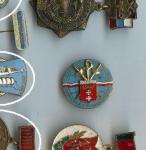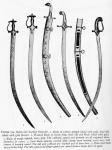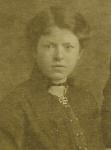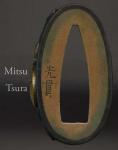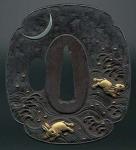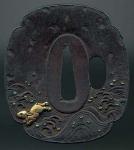-
Posts
165 -
Joined
-
Last visited
Content Type
Profiles
Forums
Blogs
Gallery
Events
Store
Everything posted by Henry 24th
-
More often than not I have seen these heraldic emblems attached to German student fraternities. The word "Panier" is always present and often the crossed "sabel mensur" fencing swords are present in the coat of arms. (As seen in the lower right panel). I will post a similar device from a 1921 beerstein later today. Regards...Henry
-
Very nice Cap, Rosenberg! Wonderful condition. There is also one on kaisersbunker in Tony's collection. Worth a peak I should say. My dad has an engraved sword belonging to this Regt. Shall I post images of it in this thread or in it's own sword thread? It would be great to see the two side by side (if only on the internet.) Thanks For sharing. Kind regards...Henry
-
Hello spionkopkid You have what MIGHT be a fairly nice Shamshir. I am only going by the image you posted, but there is no anomaly to my eyes. The difference you are thinking and writing about with regard to the hilt, is because of it's country of origin. Many Shamshir originated in Persia and Turkey. Hence the 'T" shaped hilt and no D-guard. Shamshir also come out of India where the talwar is more prevalent. This is where your anomaly begins and ends. Most Shamshir (Anglo-sized to Scimitar) that come from India have a Talwar style hilt and decoration. The scabbard is very Indian in appearance as well. usually the Turkish and Persian varieties are covered in leather, canvas or a brocade type material or steel depending on age. A really good general reference book on weapons and armor of all types is "A Glossary of the Construction Decoration and use of Arms and Armor" by George Cameron Stone. Originally Published in 1934, it has been reprinted MANY times. There are plenty of photos of Indo Persian weapons and armor as well as Japanese and the European countries. Highly recommended. The Image attached is from this book. Kind Regards...Henry
-
Pinpon, very nice thread. All who have contributed - you guys have some wonderful and rare medals. I do not have anything to add to this thread, and if the photo posted is only an EK then I ask one of the administrators to remove this post please. Tom, seeing your magnificent Prussian Verdienstkreuz fur Frauen reminded me of this photo of my Grandmother (Dad's side) Her name was Joanna Hassdenteufel(!) It is widely accepted in the family that this picture was taken in early WW1. At her neck she wears what appears to be an EK or something like it. The centre of which looks to have something in it as well. No bow mount, no neck ribbon...any thoughts?
-
Hello Vince Thanks for sending the images, they definitely helped. Unfortunately I still cannot make out the very first kanji - it happens to be the provincial name. If you could draw it and send it to me that might help. In the meantime. What you have here appears to be a wakizashi. The blade seems to be in below average condition - either damaged or flawed manufacture as well as resharpened. Here is a breakdown of the tang for now. More information once the last(first) kanji is translated. For now, it reads: Masaiye living in/at "?" province. (Either Iga, Bitchu or Bingo province) All the best Henry
-
hello SFTrooper If you send me some larger images of the linked images, then perhaps I might be able to help you in your quest. PM has been sent with my email address. Kindest Regards...Henry
-
The name is that of Nagai. It is most likely a family name. The mon is to the Tachibana family and is a depiction of an orange. Problem is that the mon no longer belongs to just the Tachibana family.
-
Hello Lach470 Are you certain the signature is Hirotada saku? Perhaps it is the scan but I read it as Tanaka Kanetada saku. I have no information to back this up and may indeed be completely wrong, especially since each kanji can be read multipe ways. Regards...Henry
-
Japanese Sword Fuchi To the fuchi surface, a female bat with her pup closely entwined. Both bats have fur intricately incised over their entire bodies. Minute gold inlay for the eyes and teeth. Also the mother bats tongue is of a deep rich red inlayed copper. Note the use of Shishiabori carving where the wings are both above and below the fuchi surface. This is most likely the work of a very accomplished Hamano artist. In all likelihood there was once a signature. Hamano School, Unsigned, circa 1800. Constructed entirely of Shibuichi, this single fuchi is a both a tragedy and a pleasure to behold. High relief carving , and Shishiabori have been effectively used to bring out a dramatic depth and life to the composition. The term "Intaglio Rivaleto" and Shishiabori refer to the same technique ... carving away the image from below the surface - Sunk relief carving. This technique was a specialty of the Hamano and Joi Schools though not exclusive to them. Unfortunately the fuchi has been cut down and dissected to prepare it for use as part of another piece of jewelry. Many pieces of "western" jewelry are found that had previously been Japanese sword fittings. Menuki made for great cufflinks, brooches and bracelets, Kozuka became eating utensil handles and brooches, kashira most often became rings and fuchi strung together made bracelets. This was a peculiarity of Victorian England during the Art Nouveau movement. close-up
-

Photograph Restoration
Henry 24th replied to geoff's topic in Preservation & Restoration of Military Artifacts
This will end up being a new photograph -(most likely) Digitally output. What will become of the original sticky taped photograph? I have been a professional scanner operator for many years in the graphic design field, and we often received originals in various states of decay...tape included. In most cases we were able to remove the tape and clean the image to some degree - thus preserving the original. Would you consider going that route as well? Kind regards...Henry -
Sorry Brian, I would have too agree with Paul. If the kanji were "shoso script" then we could try to make a signature of it. This however is definitly not kanji...looks more like sanscrit. As for the acid etching...never. What I do find interesting is that it is on a No-Dachi. Regardless of the Signature, the blade may still be real and reliable. I suspect the signature was etched into an unsigned blade (people are capable of doing some odd things).....Please post more pics when you can. Henry
-
An orphaned (single) fuchi. This means the kashira has gone missing. This time it depicts an allusion to the legend of Chokwaro. Japanese mythology is filled with 'Sennin" - hermit monks that have attained magical powers through extreme age and meditation, and/or some object. There are well over 50 of them. Chokwaros particular gift was a gourd that when opened, would release a horse that he could ride away on. Had the pommel still been with this fuchi, it would most certainly have depicted Chokwaro himself. Gourd is of gold, Horse and string are shibuichi (see above) and the ground is Shakudo Nanako. The underplate is signed Mitsutsura. school unknown, circa 1780 Front Back Underplate (tenjo gane)
-
At long last....Ricks sword translation. The sword tang bears two separate inscriptions. Most important is the Non- inlayed,plain inscription which is in fact the Swordsmiths name and place of residence. This inscription was applied to the sword at the same time as the swords manufacture. It reads on both sides of the blade (please see photos below): Bitchu (no) Kuni Mizuta (no) ju Yamashiro Oyogo Kunishige In English: Yamashiro Oyogo Kunishige (swordsmiths name) living in Mizuta (Village name), in Bitchu Province. Even though Kunishige did not date the piece, we know he worked between 1625 and 1650. I will try to find more on his life, soon. The gold inscription is a cutting test, and was probably done a number of years after the sword was forged, yet is still contemporary with the smiths lifetime or shortly after his death. The most commonly encountered cut tests list the date of the test, the name of the actual tester with their personal seal, and lastly, the test that was performed. The entire gold inscription here reads: Enpo roku-toshi Mi-Hinoto san-gatsu, ni-ju shichi jitsu. Tomita Yasichisaemonjo Shigetsuna (Kakihan) Futatsu do ochi. English Translation: Fifth year of Enpo, (Snake- Hinoto), 3rd Month, 27th day. (March 27, 1677) Tomita Yasichisaemonjo Shigetsuna (Personal Mark) Two bodies cut down To explain the signature. There may be a few characters who's exact translation did not come out quite right, and I leave it to the viewer to correct me upon those. From the english translations above, the signature is pretty staight forward with a few exceptions: a.)Mi-Hinoto is a different method of dating an object. It is referred to as the 12 signs and 10 stems method. Here it is used irregularly in conjunction with the 'normal method of dating. Both still indicate 1677. b.)The testors middle name - yasichisaemonjo - is an honourary title pretaining to a gate guard. The shorter version of the name "saemon or zai e mon' is often encountered with different prefixes. This fellow's name is extremely long and not encountered frequently. If any of our japanese members have any other thoughts, please share them. c.) The Kakihan was a personal mark, used by an individual as a seal. These kakihan or Kao are often seen on pieces of japanese sword fittings. Sometimes they look more like a small picture than a "signature' d.)Before you get any grisly visions in your head about live executions, the criminals that the cuts were conducted upon were already dead from the execution yard. The corpse(s) was then placed upon a mound and the cutting test performed. The bodies would have been cut through at the same time - not one after the other. These kanji indicate that the bodies were upright rather than horizontal. There you have it. More on the smith later. Kindest regards...Henry
-
I agree with Coastie. Either tissue paper and a soft pencil or try to hand draw the characters as best you can, scan them in and see what we come up with. Rick, please try to draw these two characters and send them to me. They are the only two left to be deciphered! I am pretty sure of what they say but I would still like a better representation. Good luck sleeping tonight
-
Hello Rick. Info coming soon....good call Coastie! Regards..Henry
-
Thanks for the comments thus far Brian and Rick. More will be posted soon. Rick, I have sent you a PM. Cheers Henry
-
A Fuchi Kashira set. These two pieces belong to the sword handle - one at the pommel (Kashira), the other (fuchi) goes just before the sword guard. Depicted are a bat, stag and reishi mushrooms. All are emblems of longevity and good fortune. The whole composition is constructed of silver, copper and shakudo inlay, over an iron body. Unsigned, Nara School circa 1750. Obverse Reverse More soon. Henry
-
First off - a Japanese Sword Guard (Tsuba) This tsuba depicts Shinto Ideology - the theme of which is prevalent in Japanese art. I will post three more fittings with this theme soon. Superstitions regarding the rabbit relate that the female conceives by running across the surface of water under a full moon on the eighteenth night of the eighth month. If however the moon is obstructed by cloud or mist, or not yet full, then she will not conceive. Please note that the moon on this tsuba is in crescent form. This is one of my absolute favorite guards. The rabbits are of copper inlay and then gilded, jumping over waves carved into the iron surface. The water spray is executed in gold and Silver dot inlay. Moon in silver. Unsigned. circa 1750 - Mito School. Obverse on the left Reverse on the right
-
Members of the GMIC. I thought I would share with you something a little different from my collection. There has been a number of postings on Japanese Swords, most of which have been war-time "shin-gunto" swords. I do not have any war-time weapons, and, It is not the swords or blades I wish to showcase - but the fittings themselves. Mostly pieces from the Edo period. Kodogu and Tosogu refer to the small fittings or ornaments that adorn the Samurai sword. They often portray religious, mythological, historical or nature themes. In addition, there is often some kind of symbology/iconography contained in the composition as well. Sword fittings were very much of a personal nature - like jewelry today. As the Samurai did not make use of personal adornment the way we have done in the west for thousands of years, the sword became adorned using all manner of depictions. Use of patinated metals ranging from deep blueish black to chromium yellow and brilliant reds, allowed the Japanese craftsmen to create "Iroe" - paintings of/in metal. Not our normal military collectables ie" photos, medals and uniforms, but military artifacts none the less. When you look at these fittings try and think: How would you create this image in metal. Any and all questions and comments are greatly appreciated. If you have any fittings you would like to show, please feel free to post them here. Enjoy


